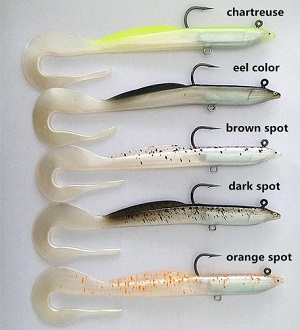How fish see color |
Most fish see colors. As with people, the retina of a fish’s eye contains two types of cells: cones and rods. Cones are used for day vision and are the cells that discern color. Rods are used for night vision and cannot distinguish colors, although they can discern light intensity. In most freshwater fish, the eyes possess both rods and cones, although night feeders like walleye or fish that live at greater depths have more rods.
|

